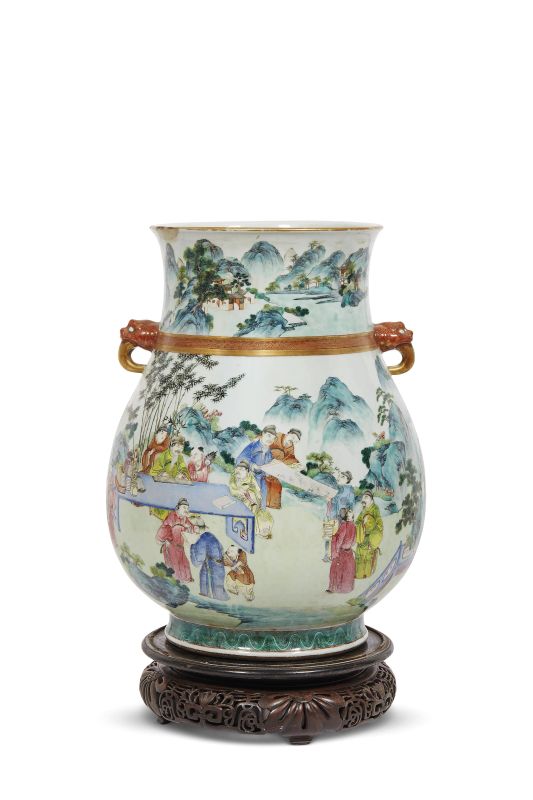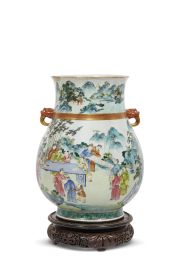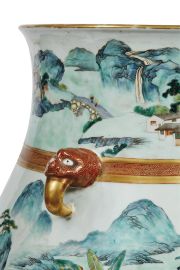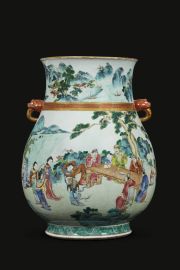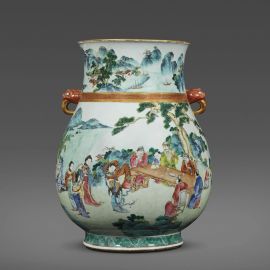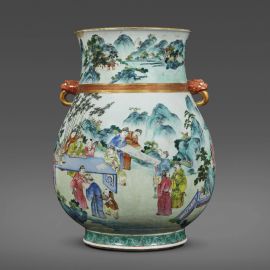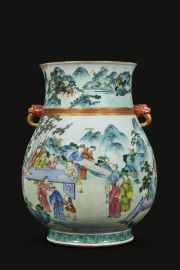VASO, CINA, DINASTIA QING PERIODO JIAQING-DAOGUANG, SEC. XVIII-XIX
di forma “HU” in porcellana nei toni della famiglia rosa decorato con personaggi a tutto tondo, prese a forma di testa di animale.
Alt.cm 52
清 十八至十九世纪初 粉彩通景游园雅集兽耳大尊
A VASE, CHINA, QING DYNASTY, 18TH-19TH CENTURIES
Durante la dinastia Song, gli studiosi cinesi si riunivano nei giardini per gustare cibo e vino, comporre poesie, creare dipinti e apprezzare oggetti d'antiquariato. Questi "raduni eleganti" erano formalmente chiamati "yaji". Gli eleganti raduni duravano in genere per giorni e talvolta erano documentati nei dipinti cinesi, chiamati dipinti "yaji".
Uno straordinario esempio di pittura Yaji su porcellana si ritrova su questo vaso che è diviso in due scene . La prima è un inno alla bellezza della pittura e nella seconda scena troviamo la piacevolezza del canto.
宋时起,中国文人雅士有聚集在花园里品尝酒食,创作诗歌,绘画,欣赏古物的志趣。这些“优雅集会”被正式命名为“雅集”。优雅的集会通常持续数日,被记载在中国画中即称为“雅集”画。此器所绘就是的雅集之景,由同一组人物分设两个场景,一是赏画作诗,二是歌乐舞艺。
During the Song Dynasty, Chinese academics used to meet in the gardens to enjoy food and wine, compose poetry, create paintings, and appreciate antiques. These "elegant meetings" were formally called "yaji". The elegant gatherings typically lasted for days and were sometimes documented in Chinese paintings, called "yaji" paintings.
An extraordinary example of Yaji painting on porcelain in shown on this vase which is divided into two scenes. The first we see an anthem to the beauty of painting and in the second scene we find the pleasure of singing.

